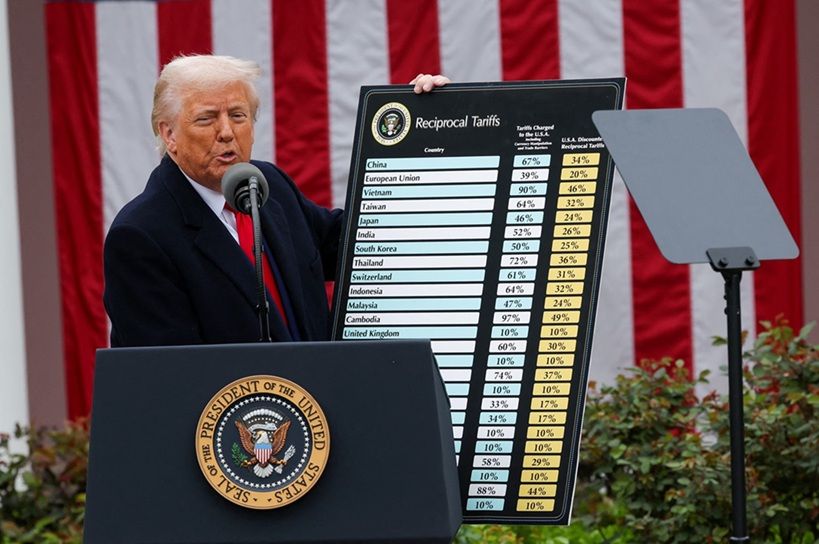Share
Homepage
News
Trump's "Liberation Day" Tariff Plan: A Bold Move to Reshape U.S. Trade Relations
Trump's "Liberation Day" Tariff Plan: A Bold Move to Reshape U.S. Trade Relations
03 tháng 4 2025
On April 2, 2025, President Donald Trump introduced a sweeping tariff initiative, aimed at restructuring global trade and strengthening domestic industries. Dubbed "Liberation Day," this policy imposes a two-tiered tariff system that will significantly impact international trade dynamics.
Key Takeaways from Trump's Tariff Announcement
1. Universal Tariff on Imports
A 10% baseline tariff will apply to imports from all countries, effective April 5, 2025.
The White House confirmed this measure is part of a broader strategy to reduce the U.S. trade deficit and encourage domestic production.

2. Higher Tariffs on Specific Countries
In addition to the universal tariff, certain nations will face higher reciprocal tariffs due to perceived trade imbalances:
China: 34%
European Union: 20%
Japan: 24%
India: 26%
Vietnam: 46%
Bangladesh: 37%
Thailand: 36%
Taiwan: 32%
Indonesia: 32%
South Korea: 25%
Cambodia: 49%
Sri Lanka: 44%
These tariffs take effect on April 9, 2025.
3. 25% Tariff on Foreign-Made Automobiles
All foreign-manufactured vehicles, including those from Canada and Mexico that do not meet USMCA (United States-Mexico-Canada Agreement) compliance, will be subject to a 25% import tax.
Why Trump is Implementing These Tariffs
Trump argues that the U.S. is facing a $1.2 trillion trade deficit, requiring immediate action to protect national interests.
The tariffs are designed to boost American manufacturing, create jobs, and generate additional revenue to offset taxes and national debt.
Trump framed this policy as a necessary response to "unfair global trade practices."
Global Reactions & Economic Implications
Market Reactions:
U.S. stock futures tumbled, with major indexes experiencing sharp declines.
Tech giants like Apple, Nike, and Gap saw after-hours stock price drops.
Asian markets plummeted, with Japan’s Nikkei and Australia’s ASX falling over 2%.
International Response:
Allies and trading partners have raised concerns, with Canada warning of possible retaliatory tariffs.
European leaders are reportedly considering legal challenges against the new U.S. trade policies.
Economic Warnings:
Experts caution that these tariffs could increase consumer prices and contribute to higher inflation.
The move risks escalating global trade tensions, potentially leading to a slowdown in economic growth.
Conclusion
Trump’s sweeping tariff measures mark one of the most aggressive shifts in U.S. trade policy in recent history. While they are intended to revitalize domestic industries and reduce the trade deficit, the potential consequences—ranging from rising consumer costs to international trade disputes—could reshape global economic relations for years to come.
infofinance.com
All information on our website is for general reference only, investors need to consider and take responsibility for all their investment actions. Info Finance is not responsible for any actions of investors.